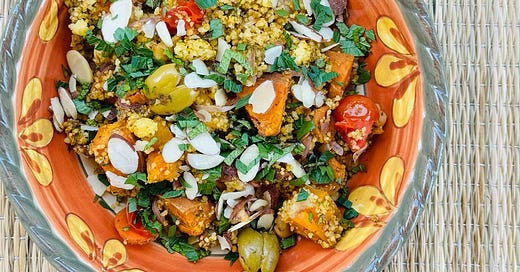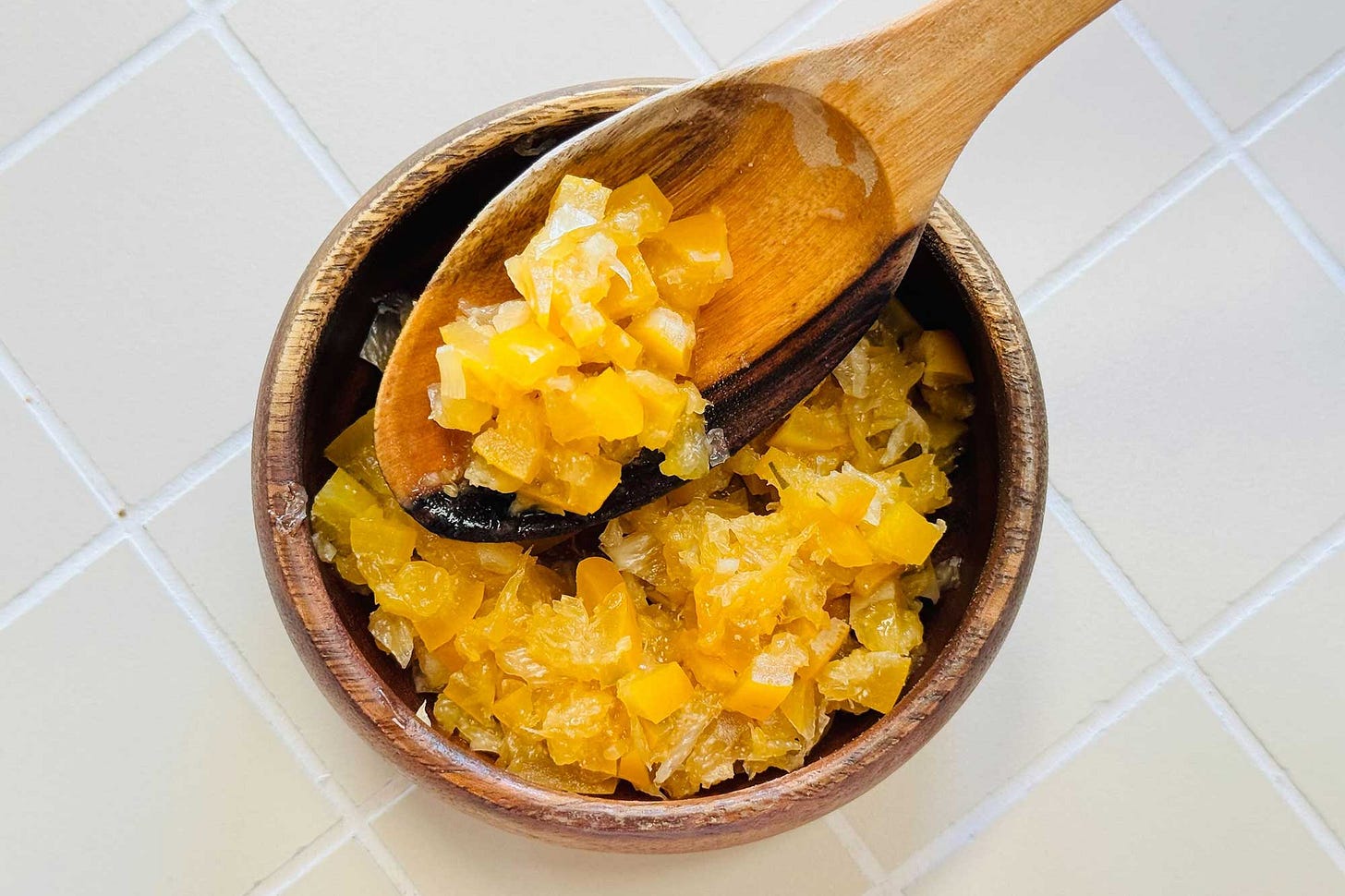Get this summery Moroccan medley on the table in 30 minutes
It all starts with a make-ahead sauce you stash in the freezer
Welcome back to Cool Beans! Around here, we believe the secret to making veggies disappear comes down to sauce. Which is why last year we started building a library of make-ahead sauces and designed each one to portion perfectly into an ice cube tray, so you’ll always have a flavor weapon at the ready. These icy dollops of goodness are also the centerpiece of our signature meal-prep method, which pairs them with frozen grains to make speedy suppers like fried rice and biryani on a sheet pan.
This week, I’m applying that same concept to another dinner winner. This one features spicy, herbaceous cubes of chermoula, a North African relish similar to chimichurri. This meal is a mashup of two classic slow-cooking stews from the region, but it gets done in a fraction of the time. Most of the flavor comes from the chermoula, but there’s an additional kick from a secret ingredient that typically takes months to prepare. Today I’ll have it ready by suppertime. Let’s dig in.
The review: A quick lemon pickle to punch up dinner
Preserved lemons are a staple in Moroccan cuisine, where they add a salty, tangy punch to stews, braises, and salads. Think of them kinda like lemon pickles. Essentially, lemons ferment in their own juices and salt until the skin and pith become tender and the flesh becomes pulpy. These salt-packed suckers can be chopped up and added to dishes or puréed into a paste, which you can shake into dressings, stir through grains or pasta, or fold in anywhere you want a more intense lemon flavor. I love adding it to salsa and hummus.
Yes, you can buy preserved lemons premade in jars at a lot of specialty grocery stores, but they tend to be pricey—plus DIYing it is incredibly simple and a great way to use up a citrus surplus. The bummer? It typically takes six to eight weeks to render those tough lemon skins soft enough to eat. In need of a quick fix, I turned to Mark Bittman’s hack for getting similar results in just three hours.
Normally, to make preserved lemons you would quarter the fruit, leaving them attached at one end, stuff them with salt, and pack ’em into jars. To hasten the process, Bittman dices up the citrus, and adds a couple tablespoons of sugar along with the salt. That one-two punch draws out moisture from the lemon peel on the quick.
Check out Mark Bittman’s quick ‘preserved’ lemon recipe at The New York Times.
The result is a punchy relish that’ll swap in for the lemons that come in a jar, but without the time needed for full-blown preservation. The speediness means it doesn’t keep quite as long as the real deal (which is about six months), but it’ll stay good for a week. The recipe yields about 2 cups—more than I’d use up in a week—so I’d advise halving it, divvying it up among friends, or freezing the excess.
Just a little bit adds instant oomph to any sauce, which is why it’s often added to chermoula, the flavor-packed Moroccan condiment at the center of this week’s recipe. So if you feel so inspired to kick dinner up a notch, go ahead and get to quick-pickling those lemons.
The recipe: A sheet tray Moroccan mashup
The inspiration for this week’s recipe comes from two North African stews: tagine and loubia. Tagine is a sweet and savory medley of meat and/or veggies, and often nuts, dried fruit, and olives. Traditionally it’s slow-cooked in an earthenware pot, also called a tagine. Loubia is a vegetarian dish made with white beans that get simmered low and slow in a rich cinnamon-and-ginger-spiced tomato sauce. I’ve always got a can of cannellini in the pantry and the cherry tomatoes are popping in my garden, so I decided to combine these two dishes with couscous and a premade batch of frozen chermoula to get all that slow-simmered flavor from freezer to sheet pan to table in about 30 minutes.
In the past, I’ve deployed this meal-prep method with a bed of frozen rice, but today I’m using couscous. While it does cook up way faster than rice, I always seem to make more than I need. Luckily, it freezes well and is superfine so it thaws quickly when you toss it in a pan. (The dish works great with fresh couscous, too.) Roasting white beans is also a bit of a deviation from the norm, but a welcome one. It gives them more texture and a nice bite: crisp on the outside, and creamy and tender on the inside. If you have chickpeas, great northern, butter or lima beans, they’ll work too.
Sheet Tray Veggie and Bean ‘Tagine’
Yield: 4 servings






